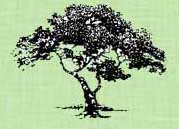Home
Treatment for Sudden Oak Death
Many tree professionals are recommending to Atherton residents that their coast live oaks be treated for Sudden Oak Death (SOD). The product being used is Agri-Fos fungicide. It is currently the only treatment approved by the State for use against Phytophora ramorum infections on oaks and tanoaks. It is best used a preventative measure and is not a cure, but it can help protect trees from getting infected, as well as suppress disease progression in early infections. The phosphonate product may be injected or mixed with a surfactant (Penta Bark) and sprayed on the trunk for absorption through the bark. It takes 3-6 weeks to start being effective against the pathogen. The treatment regime calls for the first treatment in November-December, with a booster treatment 6 months later, and then repeated annually.
Because the treatment must be made to healthy trees, and the pathogens distribution and activity is somewhat unpredictable, it is difficult to determine which trees should be treated. Generally, you should treat healthy, high-value oaks within 50m of other infested plants. You may want to treat healthy, high-value oaks if they are surrounded by California bay laurel and there are known infections between 50-300 m away. The State is not recommending treatment in areas where infested plants are not already present. Although there have been no confirmed cases of SOD in Atherton (there have been confirmed cases since this article was written - ed.), some residents with bay trees on their property are treating their live oaks as a preventative treatment. It is not expensive and it won’t hurt the trees.
Please help us to reduce the spread of SOD, and hopefully keep it from reaching Atherton, by following these simple precautions:
- Do not collect or transport host plant material from an infected area.
- Avoid entering infested areas during wet conditions and stay out of wet soil and mud.
- Keep vehicles on paved and graveled surfaces when conditions are wet.
- If you do enter an infested area, check yourself, pets, vehicle and equipment for any mud, soil or organic matter. Clean off these accumulations before traveling to an area that is not infested.
If you are scheduling any tree work during the wet months, ask your tree contractor if they have working in infested areas and are they sanitizing their equipment and vehicles before leaving an infested area. Ask your gardener if he is working on properties in Woodside or Portola Valley that are infested and to make sure all his tools, equipment and vehicle are cleaned before leaving these sites
